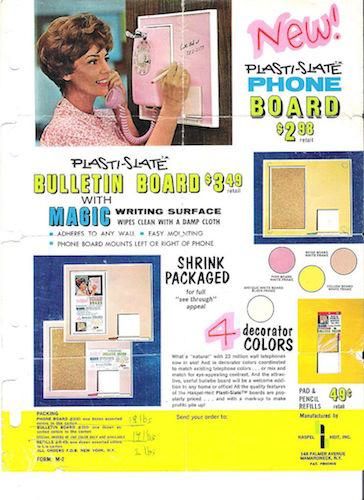Magnatag InSight
The whiteboard and how it helps us brainstorm, innovate, motivate and create
RECENT BLOG POSTS
- Glass vs Porcelain vs Melamine: Which Magnetic Dry Erase Surface Lasts Longest?
- Full‑Wall Whiteboard Panels vs Paint: Performance, Cost, and Longevity Compared
- The Definitive Guide to Creating High‑Quality Branded Whiteboards with Magnatag
- Glass vs. Porcelain: Which Whiteboard Surface Fits Modern Offices Best?
- The Definitive Guide to Choosing Durable Whiteboard Walls for Modern Offices
- Why 2025 Is the Year to Upgrade Your Office Magnetic Whiteboard
CATEGORIES

5 Fun Whiteboards Facts You Probably Didn’t Know
Thu Nov 2 2017By: Mike P
With over 50 years experience in whiteboard manufacturing, we’ve happened to pick up a few surprising bits of information surrounding one of our most popular products. So without further ado, here are five fun whiteboard facts we’ve picked up throughout the Magnatag journey.
If all this whiteboard talk has you thinking about how you can use a dry erase board in your office, feel free to check out the rest of our website for over 2300 unique whiteboard systems.
- The whiteboard was created after Martin Heit accidentally marked up a photographic negative with marker
As the story goes, Martin Heit was a photographer that regularly worked with film negatives. Way back in the day before digital prints were a thing, photographers used to frequently mark film negatives by number as a way to organize multiple prints of a similar style in the event that an additional print was needed. One day in the late 1950s, as Martin was developing photos in his darkroom, he accidentally marked a film negative with permanent marker. After realizing his mistake, Heit instinctively tried to erase the marking, only to learn that the marker wiped away easily. As a result, Heit accidentally stumbled upon the invention of a dry erase board and took it to market a few years later. - Dry Erase Boards Work Thanks To A Reaction Between An Oily Silicone Polymer Found In Dry Erase Markers and A Non-Porous Surface
All markers primarily consist of three components: color pigments, a solvent, and a polymer. The big difference between a dry erase and permanent marker is the type of polymer that is used in the manufacturing process. Dry erase markers are created with an oily silicone polymer, which helps the ink dry quickly. This type of lubricating surface acts as a barrier preventing the color pigments from binding to the surface of the whiteboard. The ink sticks to the outermost layer of the board, preventing any permanent damage to the surface itself. - The First Commercial Whiteboard Was Designed To Be Used Alongside a Home Phone
 As you can see in the advertisement above, the first documented commercial-use dry erase board was designed for taking note while talking on the phone. The boards were available in three separate colors—pink, yellow, beige, and white— to match the colors most commonly associated with home phones. Branded as the Plasti-Slate, this dry erase board was designed and manufactured by Martin Heit.
As you can see in the advertisement above, the first documented commercial-use dry erase board was designed for taking note while talking on the phone. The boards were available in three separate colors—pink, yellow, beige, and white— to match the colors most commonly associated with home phones. Branded as the Plasti-Slate, this dry erase board was designed and manufactured by Martin Heit.
- The First Whiteboard Pen Wasn’t Invented Until 1975—Nearly 20 Years After Martin Heit Discovered The Whiteboard
Prior to the invention of the dry erase marker in 1975, all whiteboards were considered wet-erase, meaning ink could only be erased with a damp cloth. A scientist at Techform Laboratories, Jerry Woolfe, invented the dry erase marker we know today. There’s not a ton of information covering how or why Woolfe created the dry erase marker, but the marker made its public debut sometime around 1980. - The Algorithms Found On The Whiteboards Of 2016’s Arrival Were Developed With The Help Of Leading Physicists
It’s usually safe to assume that the detailed math algorithm you see scribbled across a whiteboard on the set of a major Hollywood blockbuster is completely made up—and 99.9% of the time, that’s a safe bet. In the case of 2016’s sci-fi blockbuster Arrival, that couldn’t be further from the truth. The film’s producers contacted Stephen Wolfram, world-renowned computer scientist, physicist, and businessman, to help develop the alien language and time-travel mechanics used throughout the film. It’s an odd bit of detail indeed, but one that makes the film all the more interesting on repeat watches. Stephen posted a lengthy post about his experience on the film over on his personal blog, which we highly recommend checking out.
If all this whiteboard talk has you thinking about how you can use a dry erase board in your office, feel free to check out the rest of our website for over 2300 unique whiteboard systems.
Categories:Whiteboard / WhiteWall®